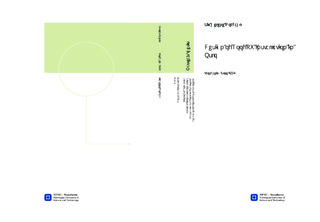| dc.description.abstract | This thesis is centered around the design of a grid-connected photovoltaic (PV) roof installation at a specific location in Oslo, Norway. The motivating factor in this study has been the growth of the solar industry globally, while there has been little to none larger PV investments in Norway. The objective is to investigate how much renewable PV energy that can be produced from the designed system, with an electrical focus. Factors such as the suns position during each day of the year, the shadings on modules, the electrical effect of shading and bypass diodes, and other factors influence the production of a PV installation. Due to the complexity of power production in a PV system, the simulation software PVsyst was used as support. A 3D representation of the building and shading elements was constructed in the simulation program for shading calculation purposes. Meteorological data from local weather stations in Lier, Ås and Blindern was compared with meteorological data provided by interpolation and satellite images. The distance between modular rows was dimensioned after a shading criterion so that there would be no shading from other modular rows during spring equinox (March 21st). The modular tilt was adjusted (from the optimal tilt angle of 40 degrees) in order to reduce shading loss and improve the performance ratio of the system. The number of module and inverter types and manufacturers was limited to three different module types, and four different inverter series. The simulated production from the three best alternatives, based on performance ratio and production were compared with the energy consumption in the building. Simple economical evaluations of the three best alternatives have been performed using the simple payback method and life cycle costing. As a result of the limited area on the roof, the shading objects and the dimensioning criteria (maximize performance ratio and production of the system) it was found that the module tilt was 20 degrees. The modules in the system are directed towards geographical south, and there is a pitch distance of 2 meters between the module rows. The resulting three final alternatives were two polycrystalline alternatives and one monocrystalline alternative. The polycrystalline alternatives used the same REC modules and different inverters, one from Eltek and the other from SMA. The monocrystalline alternative was simulated with SunPower modules and SMA inverters. The installations have a simulated energy production of 22.4, 22.9 and 31.0 MWh/year, which would cover the average energy consumption of a household in Norway (20.4 MWh/year). However, the installation will only contribute to reduce the energy consumption in the six storey commercial building by approximately 1 % per year. Comparing the simulated productions and the consumption in 2011, it is found that the installation will not result in a surplus of energy which could have been injected into the grid. The installation will therefore not change the buildings customer status to a surplus customer (plusskunde). With the simplified economical evaluation it is found that the energy from the PV installation will cost more than the energy agreement of today and it is triple the yearly average market price of electricity the last three years. The polycrystalline alternative with SMA inverters was the least expensive alternative of the three and the polycrystalline alternative with highest production. The monocrystalline alternative gave best simulated production and performance ratio of the three alternatives, but was the most expensive alternative. | nb_NO |

